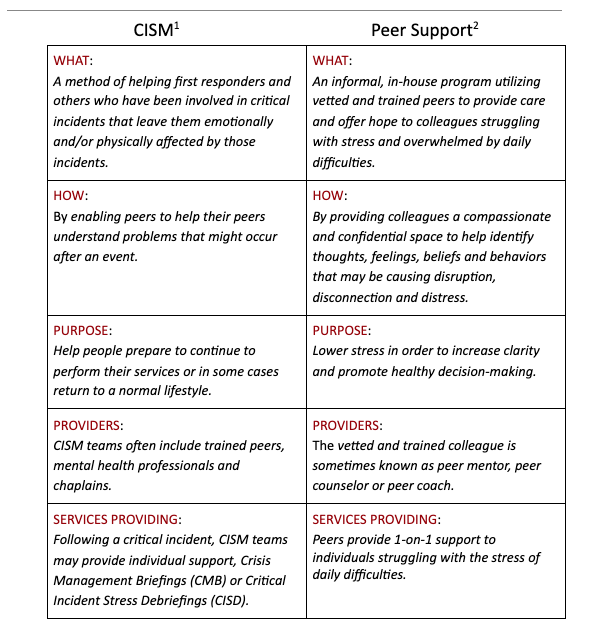The Main Difference is the Brain Difference
CISM and peer support are NOT in competition with one another. They are, instead, programs designed to complement one another for the safety and wellness of those in need.
So why have two programs? Because they help in two different ways. I think this is best explained with a bit of brain science.
To keep it simple, consider these two key parts of the brain: the front part and the middle part.
The front part is called the Prefrontal Cortex. This is the part of our brain where logic, reason and rationale reside. This part is often called our “adult-brain”. The middle part houses the Amygdala and other sections responsible for our fight, flight or freeze response. It is this part of our brain where strong emotions (like fear, greed, anger, worry, etc.) originate.
Science shows that when someone experiences a critical incident (an event that threatens life and /or lifestyle), the front part of their brain goes “offline” and the middle part lights up. This is why during high stress situations we have trouble concentrating and comprehending. We may feel overwhelmed, confused, lost or numb. We may choose to shut down, shut out or “herd” with others following the tragedy. Those in crisis are operating from the middle part of their brain. As such, providing immediate, stabilizing support is the right response.
However, crisis response would be inappropriate for a slight to moderate increase of stress since the individual is operating from the front part of his/her brain. Since the individual is able to process rationally and reasonably, a compassionate presence reflecting concerns and reframing distortions can help increase one’s awareness and understanding. From this, the individual is then able to examine his/her options and consider positive action. Trained peers are able to provide this service.

If you are in an agency / organization that has a high rate of critical incidents followed by high levels of distress, then invest in a CISM team that provides short-term crisis response. If you are in an agency / organization where employees are dealing with mild to moderate difficulties, then invest in a peer support program that provides compassionate coaching. If you are in an agency / organization that has both, then invest in both.
The point is not to invest in a program, but to invest in people. Start by identifying the type of stress (mild, moderate or severe) employees in your organization most often endure. Then invest in a program that responds to employees in the most effective and efficient way.



